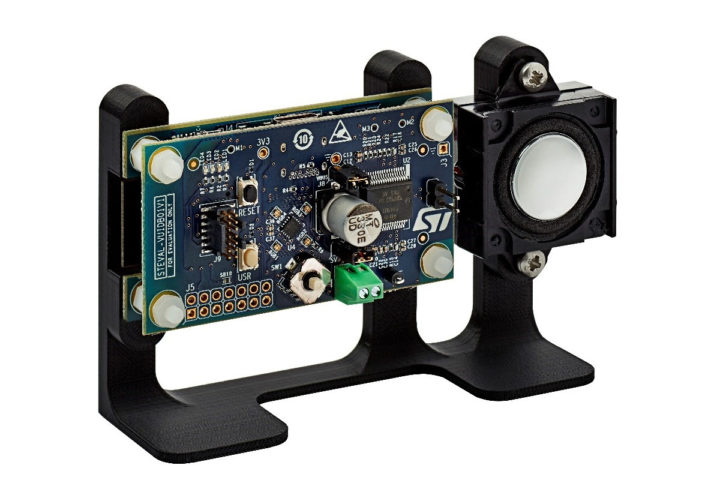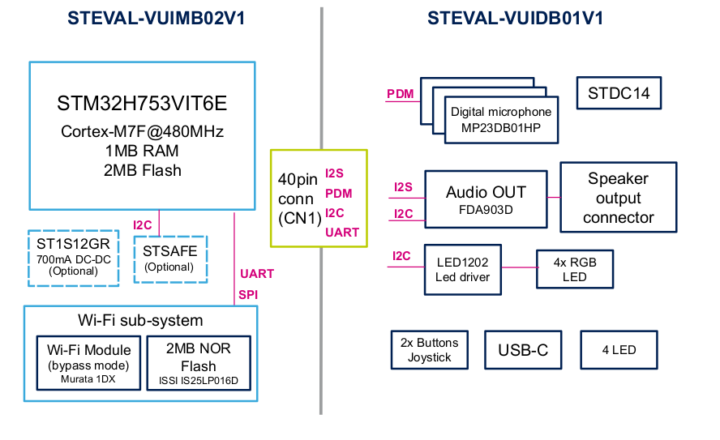We’ve already covered plenty of Amazon-qualified development kits working with Alexa Voice Services. But here’s another one with STEVAL-VOICE-UI evaluation kit making it to the list of Smart Home Dev Kits, which Amazon describes as “reference designs for creating smart home products such as light switches, thermostats, or Wi-Fi routers”.
STEVAL-VOICE-UI voice user interface (VUI) evaluation kit features an STMicro STM32H7 Arm Cortex-M7 microcontroller with 2 MB embedded flash, 1 MB embedded SRAM, 2.4 GHz Wi-Fi, and a microphone array with three MEMS microphones, as well as a loudspeaker, and some buttons and LEDs.

- Microcontroller – STMicro STM32H753VIT6E Cortex-M7 MCU @ up to 550 MHz with 2 MB flash, 1 MB SRAM
- Connectivity – 2.4 GHz Wi-Fi subsystem (Murata 1DX module) coupled to 2MB NOR flash (ISSI IS25LP016D)
- Audio
- 3x MP23DB01HP MEMS microphones with 36 and 30 mm spacing
- FDA903D class D digital input automotive audio amplifier
- 8 Ohm loudspeaker
- Misc – 4x RGB LEDs and 4x simple LEDs; joystick, reset, and user push-buttons
- Dimensions – 65×36 mm

The software package implements audio front-end, Amazon “Alexa” wake word, audio playback, and Amazon Alexa communication protocol software. The SDK runs on internal memories only for maximum integration. To get started with development, you’ll need a Windows OS (7, 8, and 10), Linux 64-bit, or MacOS computer to run IAR Embedded Workbench EWARM IDE, and a companion app is also available for Android 7+ or iOS 14+ mobile devices.

Jean-Luc started CNX Software in 2010 as a part-time endeavor, before quitting his job as a software engineering manager, and starting to write daily news, and reviews full time later in 2011.
Support CNX Software! Donate via cryptocurrencies, become a Patron on Patreon, or purchase goods on Amazon or Aliexpress




